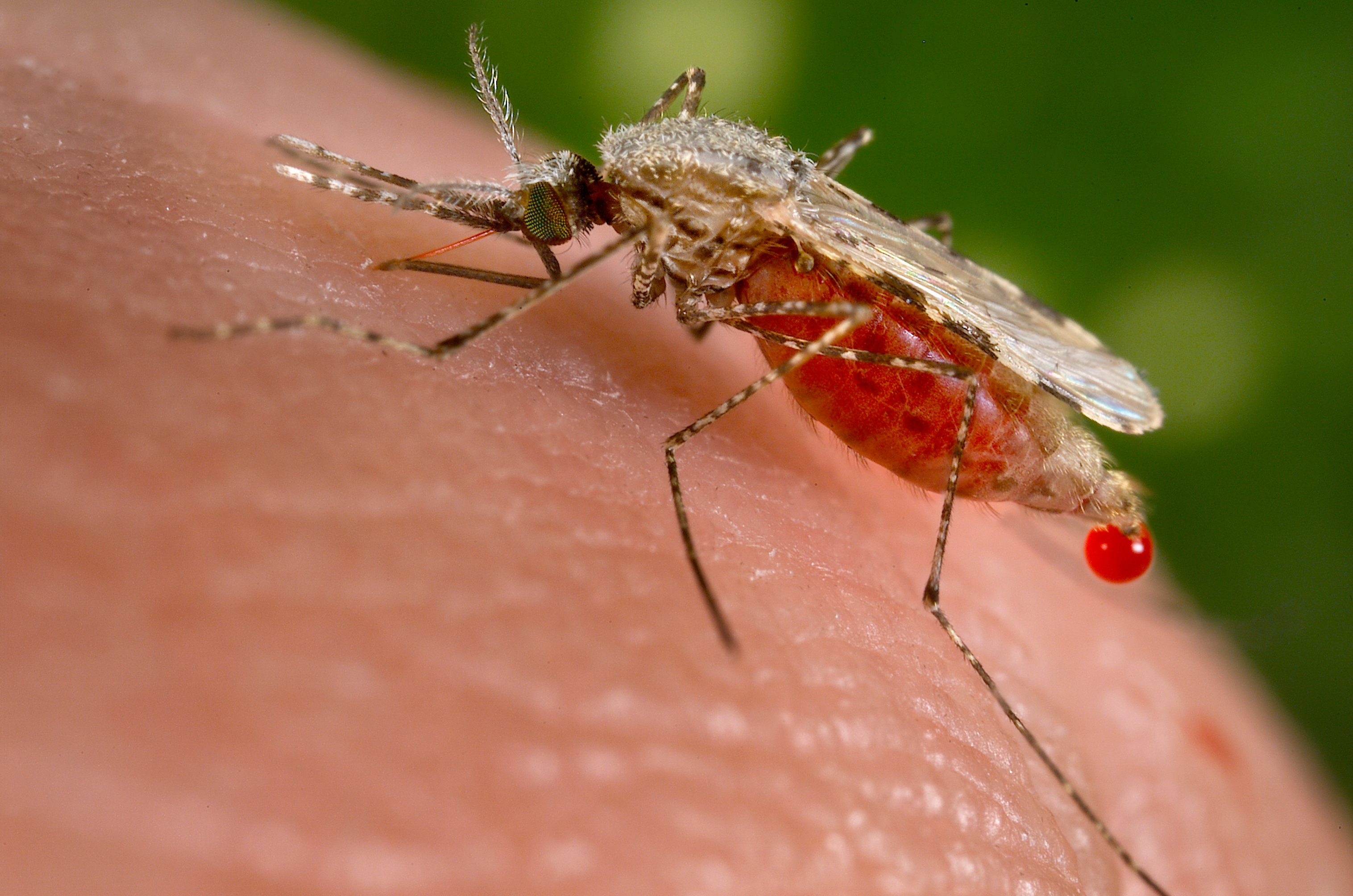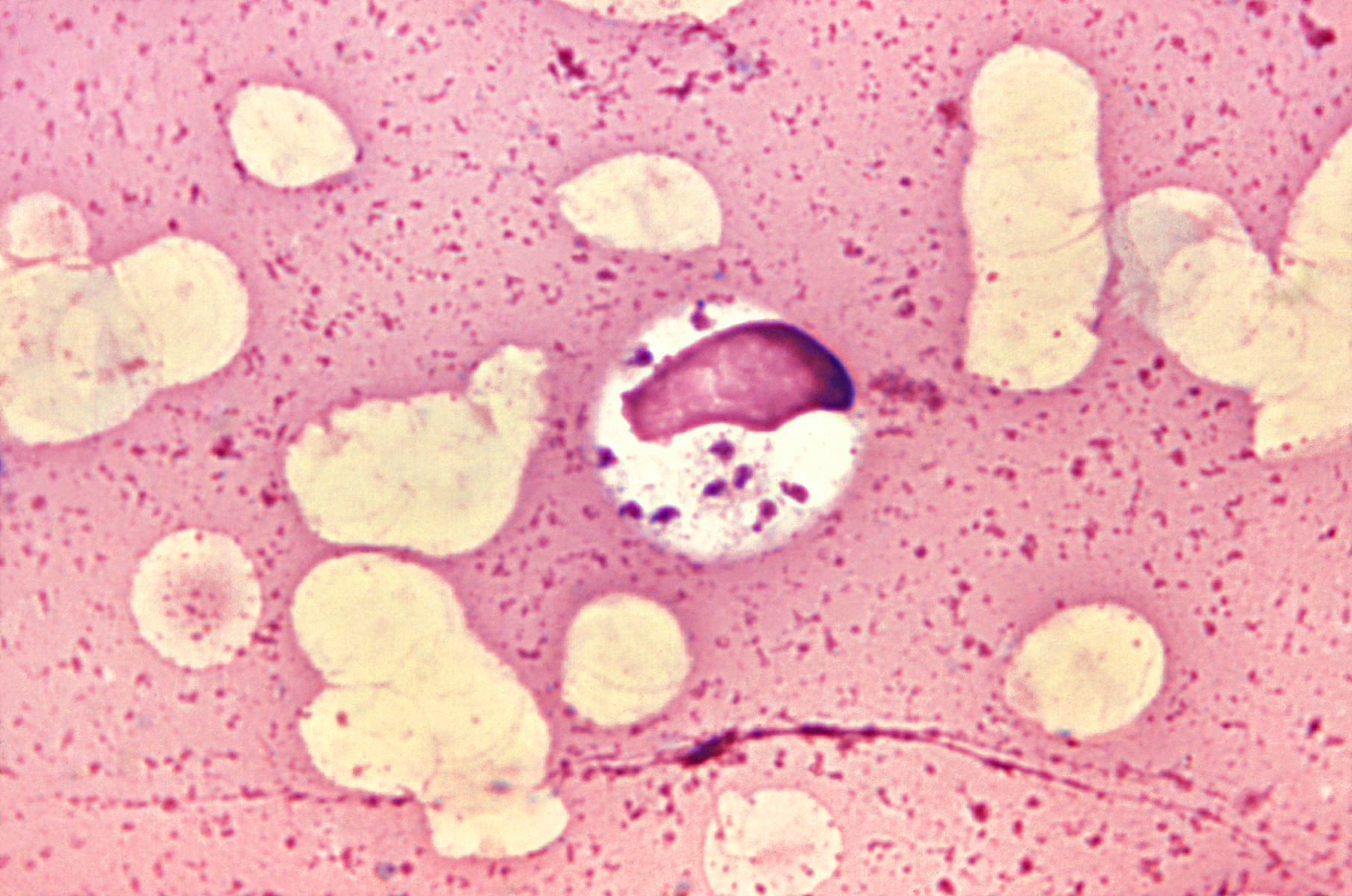|
Trypanosoma Equiperdum
''Τrypanosoma equiperdum'' is a species of kinetoplastid parasites that causes covering sickness in horses and other animals in the family Equidae. ''T. equiperdum'' is the only known trypanosome that is not spread by an insect vector. There has been substantial controversy surrounding whether ''T. equiperdum'' should be considered a unique species, or a strain of '' T. evansi'' or '' T. brucei''. ''T. equiperdum'' is unique in that its kinetoplast, the network of connected rings that make up its mitochondrial DNA Mitochondrial DNA (mtDNA and mDNA) is the DNA located in the mitochondrion, mitochondria organelles in a eukaryotic cell that converts chemical energy from food into adenosine triphosphate (ATP). Mitochondrial DNA is a small portion of the D ..., consists of thousands of "minicircles" that are identical in sequence. References External links * Parasites of equines Parasitic excavates Trypanosomatida Protists described in 1901 Euglenozoa species {{ ... [...More Info...] [...Related Items...] OR: [Wikipedia] [Google] [Baidu] |
Kinetoplastid
Kinetoplastida (or Kinetoplastea, as a class) is a group of flagellated protists belonging to the phylum Euglenozoa, and characterised by the presence of a distinctive organelle called the kinetoplast (hence the name), a granule containing a large mass of DNA. The group includes a number of parasites responsible for serious diseases in humans and other animals, as well as various forms found in soil and aquatic environments. The organisms are commonly referred to as "kinetoplastids" or "kinetoplasts". The kinetoplastids were first defined by Bronislaw M. Honigberg in 1963 as the members of the flagellated protozoans. They are traditionally divided into the biflagellate Bodonidae and uniflagellate Trypanosomatidae; the former appears to be paraphyletic to the latter. One family of kinetoplastids, the trypanosomatids, is notable as it includes several genera which are exclusively parasitic. ''Bodo'' is a typical genus within kinetoplastida, which also includes various common f ... [...More Info...] [...Related Items...] OR: [Wikipedia] [Google] [Baidu] |
Covering Sickness
Covering sickness, or dourine (French, from the Arabic ''darina'', meaning mangy (said of a female camel), feminine of ''darin'', meaning dirty), is a disease of horses and other members of the family Equidae. The disease is caused by '' Trypanosoma equiperdum'', which belongs to an important genus of parasitic protozoa. The occurrence of dourine is notifiable in the European Union under legislation from the OIE. There currently is no vaccine and although clinical signs can be treated, there is no cure. Parasite Out of the ''Trypanosoma'' genus, ''Trypanosoma equiperdum'' has been discovered to be most closely linked to ''Trypanosoma evansi'', so much so that even observation under microscope is not sufficient to differentiate between the two as their structure is very similar. Dourine has no known vectors or fomites existing in the natural world, being known only as a sexually transmitted disease of members of the equine family, including donkeys, mules, and horses. In a lab ... [...More Info...] [...Related Items...] OR: [Wikipedia] [Google] [Baidu] |
Equidae
Equidae (commonly known as the horse family) is the Taxonomy (biology), taxonomic Family (biology), family of Wild horse, horses and related animals, including Asinus, asses, zebra, zebras, and many extinct species known only from fossils. The family evolved more than 50 million years ago, in the Eocene epoch, from a small, multi-toed ungulate into larger, single-toed animals. All Extant taxon, extant species are in the genus ''Equus (genus), Equus'', which originated in North America. Equidae belongs to the order Perissodactyla, which includes the extant tapirs and rhinoceros, and several extinct families. It is more specifically grouped within the superfamily (taxonomy), superfamily Equoidea, the only other family being the extinct Palaeotheriidae. The term equid refers to any member of this family, including any equinae, equine. Evolution The oldest known fossils assigned to Equidae were found in North America, and date from the early Eocene epoch, 54 million years ago. Th ... [...More Info...] [...Related Items...] OR: [Wikipedia] [Google] [Baidu] |
Trypanosoma
''Trypanosoma'' is a genus of kinetoplastids (class Trypanosomatidae), a monophyletic group of unicellular parasitic flagellate protozoa. Trypanosoma is part of the phylum Euglenozoa. The name is derived from the Ancient Greek ''trypano-'' (borer) and ''soma'' (body) because of their corkscrew-like motion. Most trypanosomes are heteroxenous (requiring more than one obligatory host to complete life cycle) and most are transmitted via a vector. The majority of species are transmitted by blood-feeding invertebrates, but there are different mechanisms among the varying species. '' Trypanosoma equiperdum'' is spread between horses and other equine species by sexual contact. They are generally found in the intestine of their invertebrate host, but normally occupy the bloodstream or an intracellular environment in the vertebrate host. Trypanosomes infect a variety of hosts and cause various diseases, including the fatal human diseases sleeping sickness, caused by '' Trypanosoma br ... [...More Info...] [...Related Items...] OR: [Wikipedia] [Google] [Baidu] |
Vector (epidemiology)
In epidemiology, a disease vector is any living agent that carries and transmits an infectious pathogen such as a parasite or microbe, to another living organism. Agents regarded as vectors are mostly blood-sucking (Hematophagy, hematophagous) arthropods such as mosquitoes. The first major discovery of a disease vector came from Ronald Ross in 1897, who discovered the malaria pathogen when he dissected the stomach tissue of a mosquito. Arthropods Arthropods form a major group of pathogen vectors with mosquitoes, Fly, flies, Sandfly, sand flies, lice, fleas, ticks, and mites transmitting a huge number of pathogens. Many such vectors are haematophagous, which feed on blood at some or all stages of their lives. When the insects and ticks feed on blood, the pathogen enters the blood stream of the host. This can happen in different ways. The ''Anopheles'' mosquito, a vector for malaria, filariasis, and various arthropod-borne-viruses (arboviruses), inserts its delicate mouthpart under ... [...More Info...] [...Related Items...] OR: [Wikipedia] [Google] [Baidu] |
Trypanosoma Evansi
''Trypanosoma evansi'' is a parasitic species of excavate trypanosome in the genus ''Trypanosoma'' that is one cause of surra in animals. Discovered by Griffith Evans in 1880 at Dera Ismail Khan (British India), it is the first known trypanosome that causes infection. It is a common parasite in India and Iran and causes acute disease in camels and horses, and chronic disease in cattle and buffalo. In Pakistan, it has been found to be the most prevalent trypanosome species in donkeys. It is now established to infect other mammals, including humans. It has been proposed that ''T. evansi'' is—like '' T. equiperdum''—a derivative of '' T. brucei''. Due to the loss of part of the mitochondrial (kinetoplast) DNA ''T. evansi'' is not capable of infecting tsetse flies, the usual invertebrate vectors of trypanosomes, and establishing the subsequent life-stages. Due to its mechanical transmission ''T. evansi'' shows a very broad vector specificity including members of the genera ''T ... [...More Info...] [...Related Items...] OR: [Wikipedia] [Google] [Baidu] |
Trypanosoma Brucei
''Trypanosoma brucei'' is a species of parasitic Kinetoplastida, kinetoplastid belonging to the genus ''Trypanosoma'' that is present in sub-Saharan Africa. Unlike other protozoan parasites that normally infect blood and tissue cells, it is exclusively extracellular and inhabits the blood plasma and body fluids. It causes deadly vector-borne diseases: African trypanosomiasis or sleeping sickness in humans, and animal trypanosomiasis or ''nagana'' in cattle and horses. It is a species complex grouped into three subspecies: ''T. b. brucei'', ''T. b. gambiense'' and ''T. b. rhodesiense''. The first is a parasite of non-human mammals and causes ''nagana'', while the latter two are zoonotic infecting both humans and animals and cause African trypanosomiasis. ''T. brucei'' is transmitted between mammal hosts by an insect Vector (epidemiology), vector belonging to different species of tsetse fly (''Glossina''). Transmission occurs by biting during the insect's blood meal. The parasites ... [...More Info...] [...Related Items...] OR: [Wikipedia] [Google] [Baidu] |
Kinetoplast
A kinetoplast is a network of circular DNA (called kDNA) inside a mitochondrion that contains many copies of the mitochondrial genome. The most common kinetoplast structure is a disk, but they have been observed in other arrangements. Kinetoplasts are only found in Excavata of the class Kinetoplastida. The variation in the structures of kinetoplasts may reflect phylogenic relationships between kinetoplastids. A kinetoplast is usually adjacent to the organism's flagellum, flagellar basal body, suggesting that it is bound to some components of the cytoskeleton. In ''Trypanosoma brucei'' this cytoskeletal connection is called the tripartite attachment complex and includes the protein p166. ''Trypanosoma'' In trypanosoma, trypanosomes, a group of flagellated protozoans, the kinetoplast exists as a dense granule of DNA within the mitochondrion. ''Trypanosoma brucei'', the parasite which causes African trypanosomiasis (African sleeping sickness), is an example of a trypanosome with a kine ... [...More Info...] [...Related Items...] OR: [Wikipedia] [Google] [Baidu] |
Mitochondrial DNA
Mitochondrial DNA (mtDNA and mDNA) is the DNA located in the mitochondrion, mitochondria organelles in a eukaryotic cell that converts chemical energy from food into adenosine triphosphate (ATP). Mitochondrial DNA is a small portion of the DNA contained in a eukaryotic cell; most of the DNA is in the cell nucleus, and, in plants and algae, the DNA also is found in plastids, such as chloroplasts. Mitochondrial DNA is responsible for coding of 13 essential subunits of the complex oxidative phosphorylation (OXPHOS) system which has a role in cellular energy conversion. Human mitochondrial DNA was the first significant part of the human genome to be sequenced. This sequencing revealed that human mtDNA has 16,569 base pairs and encodes 13 proteins. As in other vertebrates, the human mitochondrial genetic code differs slightly from nuclear DNA. Since animal mtDNA evolves faster than nuclear genetic markers, it represents a mainstay of phylogenetics and evolutionary biology. It als ... [...More Info...] [...Related Items...] OR: [Wikipedia] [Google] [Baidu] |
Parasites Of Equines
Parasitism is a close relationship between species, where one organism, the parasite, lives (at least some of the time) on or inside another organism, the host, causing it some harm, and is adapted structurally to this way of life. The entomologist E. O. Wilson characterised parasites' way of feeding as "predators that eat prey in units of less than one". Parasites include single-celled protozoans such as the agents of malaria, sleeping sickness, and amoebic dysentery; animals such as hookworms, lice, mosquitoes, and vampire bats; fungi such as honey fungus and the agents of ringworm; and plants such as mistletoe, dodder, and the broomrapes. There are six major parasitic strategies of exploitation of animal hosts, namely parasitic castration, directly transmitted parasitism (by contact), trophicallytransmitted parasitism (by being eaten), vector-transmitted parasitism, parasitoidism, and micropredation. One major axis of classification concerns invasiveness: an endoparas ... [...More Info...] [...Related Items...] OR: [Wikipedia] [Google] [Baidu] |
Trypanosomatida
Trypanosomatida is a group of kinetoplastid unicellular organisms distinguished by having only a single flagellum. The name is derived from the Greek ''trypano'' (borer) and ''soma'' (body) because of the corkscrew-like motion of some trypanosomatid species. All members are exclusively parasitic, found primarily in insects. A few genera have life-cycles involving a secondary host, which may be a vertebrate, invertebrate or plant. These include several species that cause major diseases in humans. Some trypanosomatida are intracellular parasites, with the important exception of ''Trypanosoma brucei''. Medical importance The three major human diseases caused by trypanosomatids are; African trypanosomiasis (African trypanosomiasis, sleeping sickness, caused by ''Trypanosoma brucei'' and transmitted by Tsetse fly, tsetse flies), South American trypanosomiasis (Chagas disease, caused by ''Trypanosoma cruzi, T. cruzi'' and transmitted by Triatominae, triatomine bugs), and leishmanias ... [...More Info...] [...Related Items...] OR: [Wikipedia] [Google] [Baidu] |



